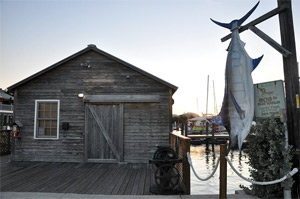Sea turtles are protected now, but were once a delicacy that nearly led to their extinction.

In the mid to late 1800s Key West was the center for turtle processing and canning. At that time, turtle soup was considered a delicacy in parts of the United States and especially in Europe.
Turtles caught throughout the Caribbean were shipped to Key West, kept alive by cruelly placing them on their backs aboard the turtle schooner ADAMS. Upon arrival in Key West, turtles were kept in dockside corrals called ‘kraals’ until they were slaughtered and processed into soup.
By 1970 the turtle population had been devastated. Through the courageous efforts of visionary conservationists, in cooperation with the Governor of Florida, the first catch size regulations were enacted on March 23rd, 1971, establishing that any turtle smaller than 41 inches was to be released. Turtle canneries went out of business, and the turtle trade came to an end in ’71 with the passage of the Endangered Species Act.
Caribbean turtle populations have somewhat recovered but continue to struggle against natural and man made, life threatening obstacles. Destruction of habitat, reckless disposal of consumable waste products, poorly maintained traps and nets, improperly discarded monofilament and the degradation of marine waters through chemical spillage and improper discharge continue to threaten these vulnerable and gentle creatures of the sea.
Many locals genuinly care about the well being of sea turtles and the museum does a good job of informing the public about past and present dangers.
Location: 200 Margaret Street
